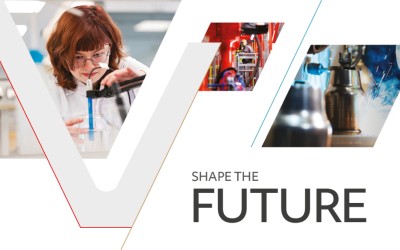AISTech 2019

AISTech 2019 — Steel’s Premier Technology Event will be held at the David L. Lawrence Convention Center, Pittsburgh, Pennsylvania, USA, 6-9 May 2019.
This event will feature technologies from all over the world that help steel producers to compete more effectively in today’s global market. AISTech is a can’t-miss event for anyone involved at any level of today’s steel marketplace. Follow the link for more information on the Event.
The Vesuvius booth # 645 will focus on:
- Portable SMART Tundish Robotics & Tundish solutions
- LG32
- Laser Technologies
- Digital Services (Sensors and Probes)
Below, please find the information on the Vesuvius technical papers at AISTech Conference:
- Wednesday, May 8 at 8:30AM - 9:00AM (Location 408 )
Session: Continuous Casting - Casting Technology & Safety
Authors: Franz Ramstorfer, Ternium Brazil; Leonardo Martins Demuner, Ternium Brazil; Fabio Luiz Lourenço, Ternium Brazil; Vinicius Cunha Aranda, Ternium Brazil; Vinicius Sinhorely Oliveira, Ternium Brazil; Willian Junior Correa, Ternium Brazil; Eduardo Hernandez Duarte, Vesuvius; Lúcio Mascarenhas Fernandes, Vesuvius
Abstract: During manual tundish operations such as temperature measurement, sampling, powder application and ladle shroud manipulation, the operator is exposed to heat, dust, physical exertion, and inherent danger from tundish reactions or ladle scull. While working in this environment, important operational tasks have to be performed in order to guarantee process stability and product quality. By implementing robotized tundish operations using two robots, a major increase in safety, operation efficiency and process reliability could be achieved. The present work gives a detailed overview of the project layout, its components, features and operational performance.
- Wednesday, May 10 at 8:00 am (RM 202A)
‘Comparison of Inclusion Modification Process in Lab Experiments and Industrial Production
After Reduction of Slags and Refractories by High-Al Steel’
Session: RE Enhancement, Hot Isostatic Processing & Bearing Fatigue Life (Metallurgy - Processing, Products and Applications)
Authors: Haoyuan Mu, Vesuvius; Bryan Webler, Carnegie Mellon University; Richard Fruehan, Carnegie Mellon University
Abstract: Dissolved high Al content in steel is able to reduce slag and refractory materials. As a result, corresponding metallic elements such as Mg and Ca are introduced into liquid steel and subsequently change original inclusions. However, the inclusion observation in lab experiments and industrial production is different to a certain extent. This project focuses on the kinetics of such inclusion modification reactions and provides modeling results to explain how different mass transfer conditions in lab and industry can alter the process of inclusion modification.
- Wednesday, May 10 at 8:30 am (RM 205A)
‘Optimized Steel Grade Transition Practice at JSW Vijayanagar’
Session: Tundish Optimization (Continuous Casting)
Authors: Ravishekar Konangi, JSW Steel Ltd.; Abhijit Sarkar, JSW Steel Ltd.; Suyay Patil, JSW Steel Ltd.;
Rajish Sadanandan, Vesuvius India Ltd.; Rajesh Mukhekar, Vesuvius India; Johan Richaud, Vesuvius
Abstract: In order to achieve long tundish sequences to reduce refractory cost, to improve caster yield, steel plant casting managers must schedule casting of different steel grades after another. But this transition process after a ladle change results in hybrid slabs that will be downgraded or sometimes scrapped, depending on the severity of the chemistry change. Thus it is important to determine the the intermix length to reduce these downgrades. JSW Vijayanagar and Vesuvius have reconsidered the influence of the ladle shroud design and submergence practice, the Turbostop™ impact pad geometry, the tundish profile design, along with optimizing casting processes to reduce the intermix length. In addition, grade transition predicting tools, based on both physical modeling and numerical simulations, have been evaluated and implemented by JSW Vijayanagar.







